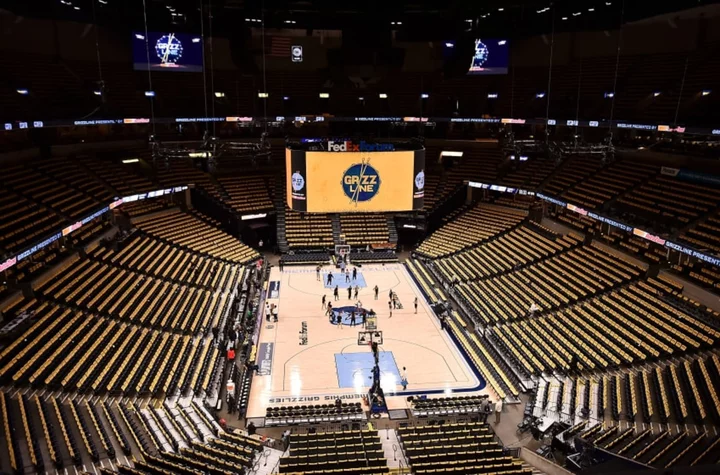With rumors circulating that the NBA is eyeing its first expansion since 2004, with Las Vegas and Seattle the most likely candidates for new clubs, the Western Conference will need to be tweaked to make room. Provided the NBA chooses to retain its East-West alignment that has been in place from the roots of the old Basketball Association of America in 1946, that means two of the current clubs in the West need to be shifted to the East.
There is only one exception to the East-West split in the NBA. In the first season after the merger of the BAA and the National Basketball League in 1950-51, there were three divisions — the predecessor of the current conferences. Along with Eastern and Western divisions, the fledgling NBA also had a Central Division.
The winner of the Eastern Division playoffs drew a bye to the NBA Finals, while the Central and Western champs met in a best-of-three semifinal series for the other Finals berth. When the NBA lost five clubs in the 1950 offseason (and a sixth in January 1951), the East-West format returned and has continued since.
The divisions were redesignated as the Eastern and Western conferences with the 1970 expansion, when four divisions (two per conference) were created with the increase in franchises from 14 to 17.
The last team to change conferences was the New Orleans Hornets (now the New Orleans Pelicans), who moved from East to West in 2004 when Charlotte's new franchise began play.
There are three likely candidates for a change of conference addresses. We present them in order of east to west.
3. Memphis Grizzlies
Memphis is slightly the furthest east in the current Western Conference with a longitude of 90.0490 degrees West, just eastward of New Orleans.
As an NBA franchise, Memphis has always competed in the Western Conference since the franchise moved from Vancouver in 2001. The city played in both the East and West as an ABA club of many names from 1970-75 after relocating from, coincidentally, New Orleans.
The Memphis Grizzlies are closest to New Orleans, a distance of 393 miles, with Dallas (457 miles) and Oklahoma City (467 miles) the only clubs within 500 miles of them in the Western Conference.
In the Eastern Conference, Atlanta is only 391 miles away and Indianapolis can be reached in 464 miles.
Still. purely based on geography, Memphis is the most likely candidate for a shift back to the East.
2. New Orleans Pelicans
At a longitude of 90.715 degrees West, New Orleans is the eastern-most outpost in the Western Conference by an ever-so-slight margin.
Each of the city's two NBA franchises spent time in the Eastern Conference, with the New Orleans Jazz residing in the East for its entire existence from 1974-79 and the relocated Charlotte Hornets remaining in the East for its first two seasons in the Big Easy from 2002-04.
Geographically, the New Orleans Pelicans are closest to Houston (347 miles) and Memphis (393 miles), with Dallas (507 miles), San Antonio (537 miles) and Oklahoma City (706 miles) also relatively near.
Conversely, the closest Eastern Conference city is Atlanta (469 miles, with Orlando (639 miles), Charlotte (714 miles) and Miami (863 miles) the next-closest.
Like Memphis, if the decision is based purely by lines and dots on a map, New Orleans logically would join Memphis in a wagons-east move.
1. Minnesota Timberwolves
The wild-card in any discussion of conference realignment is the Minnesota Timberwolves. While Minneapolis is significantly west of Memphis and New Orleans (93.2650 degrees West), it is also on an island geographically from its Western Conference rivals.
The nearest Western city is Oklahoma City (788 miles), with Memphis, Denver and Dallas the only other cities within 1,000 miles.
Compare that to 337 miles from Milwaukee, 413 mil;es to Chicago, 592 miles to Indianapolis, 693 miles to Detroit and 757 miles to Cleveland and you have four teams closer than any rival in the West.
The Timberwolves are always among the NBA leaders in air miles traveled each season, given they have two annual trips to Portland (1,726 miles) and Salt Lake City (1,244 miles) plus at least one trip per season to Los Angeles (1,931 miles), Phoenix (1,642 miles), Sacramento (1,894 miles)( and San Francisco (1,977 miles).
Given Minnesota's location in the Midwest and its proximity to the five teams currently in the Central Division, moving the Timberwolves to the East might be the most practical move, even if the geography doesn't make as much sense.
For what its worth, the Minneapolis Lakers were either a Central or Western division team. But both of Minnesota's entries in the old ABA were in the Eastern Division. The Timberwolves were placed in the Western Conference for their 1989-90 expansion campaign and have remained there.









